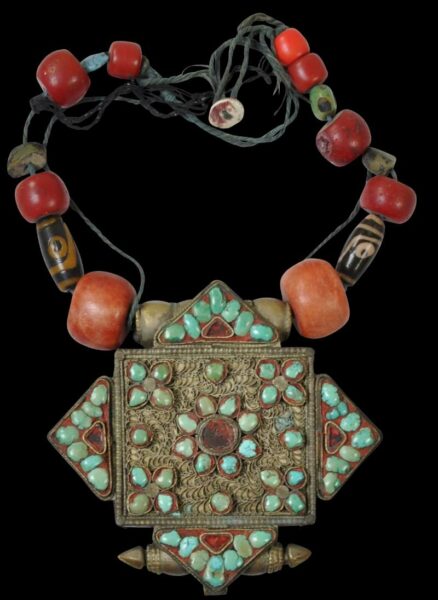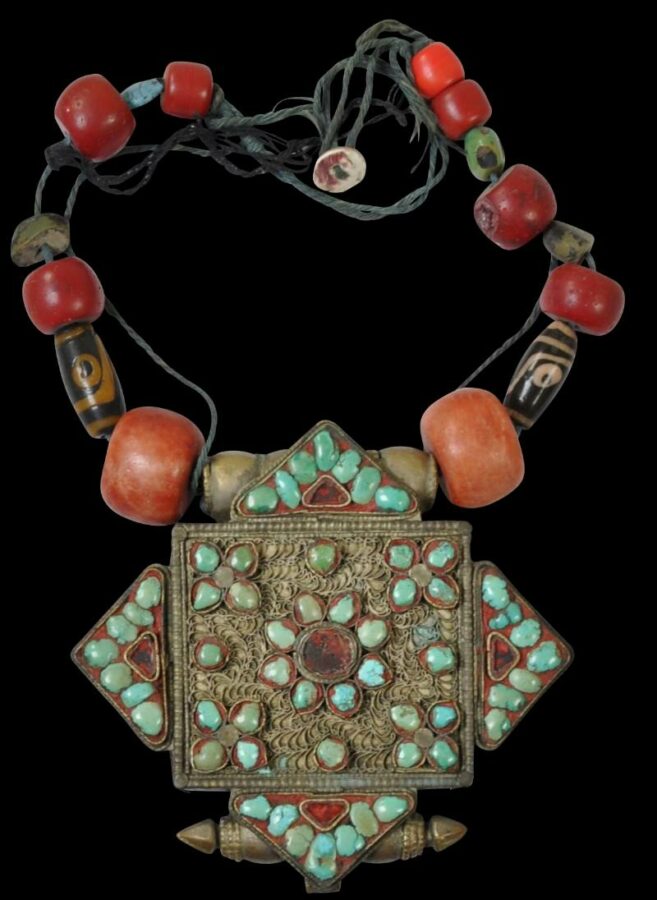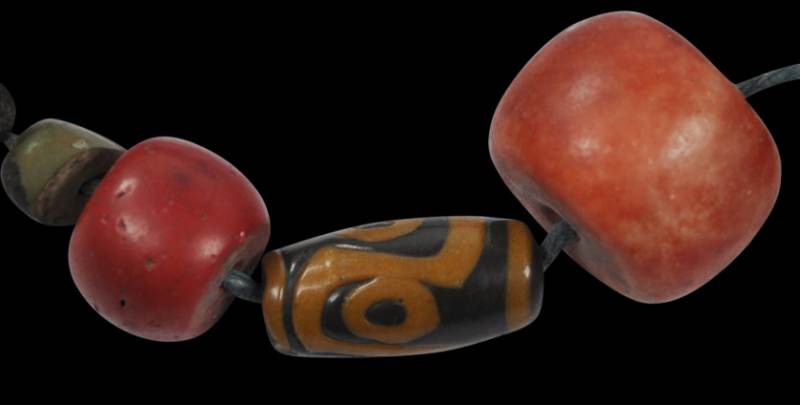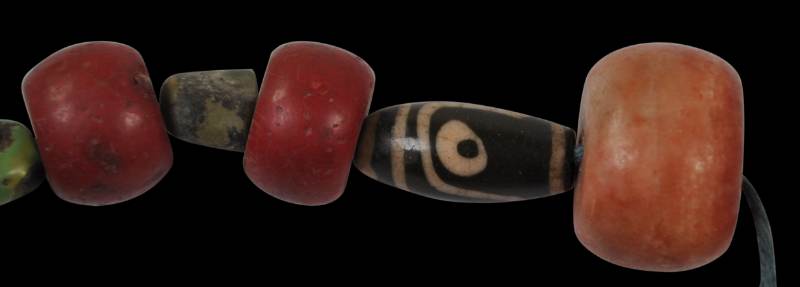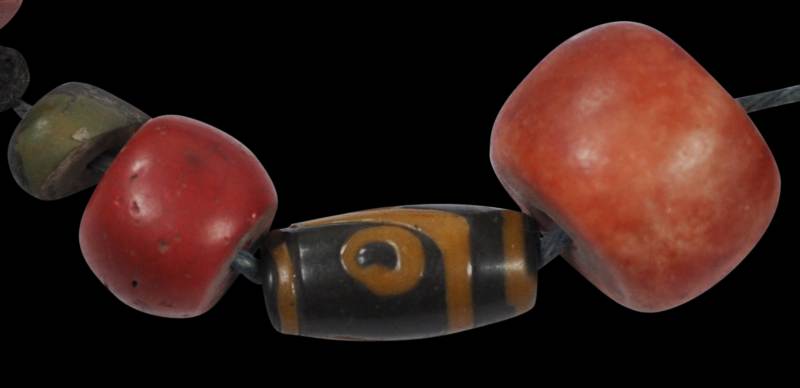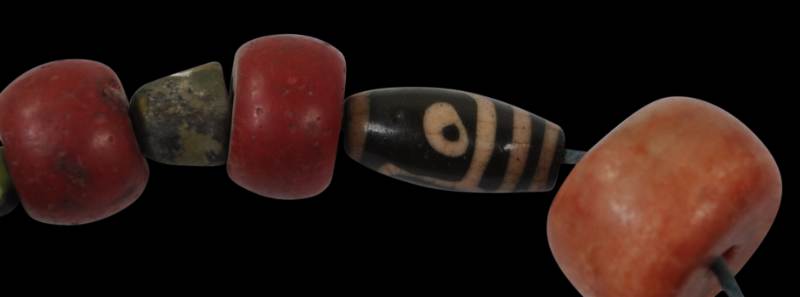Enquiry about object: 6512
Tibetan Ga’u Box set with Turquoise and with Early Chinese or Indian Glass Dzi Beads
Lhasa, Tibet probably early 19th century
length (of ga'u): 9.3cm, width (of ga'u): 10cm, depth: 2.1cm, diameter of the largest coral-glass bead: approximately 2.5cm, overall weight: 150g
Provenance
old private collection, UK.
The ga’u box and necklace includes a mixture of turquoise beads, coral-red glass beads produced in Nepal and known as ‘Sherpa coral’, and Indian or Chinese-made glass beads that emulate agate dzi beads. The glass dzi beads are interesting and relatively rare examples. Such beads are believed to have been produced in India or China probably in the early 19th century (and maybe earlier) for the Tibetan market (Allen, 2002).
The ga’u itself is a double-square silver alloy example and was a type worn by women particularly in and around Lhasa. The front plate is decorated with turquoise chips and faceted glass segments backed with red foil, all arrayed in flower and triangle motifs, and set among silver wire.
The ga’u was worn suspended from the top gadrooned tube, which shows considerable wear and age. The lower decoration is a stylised dorje ornament which hangs at the bottom when worn.
The dzi beads are of tapering, barrel-form, and of dark-brown, black and white glass – following the form and patterns of agate examples. Tibetans and other Himalayan people valued the beads highly, and some regarded the beads as having supernatural origins: they had either fallen to earth being dropped by sky gods or were created within the earth. It is unlikely that the agate beads were made in Tibet itself and possibly came from Persia, India, or Burma during ancient times. The costliness of the agate versions encouraged early imports of glass equivalents from India or China, but now even these early 19th century versions are relatively rare. Allen (2002, pl. VI) illustrates three similar beads and observes that among imitation dzi beads, these three are ‘the oldest and most unusual’.
The ga’u here and its attached beads all show significant age and wear.
References
Allen, J., ‘Tibetan zi beads’, in Arts of Asia, July-August 2002.
Clarke, J., Jewellery of Tibet and the Himalayas, V&A Publications, 2004.


